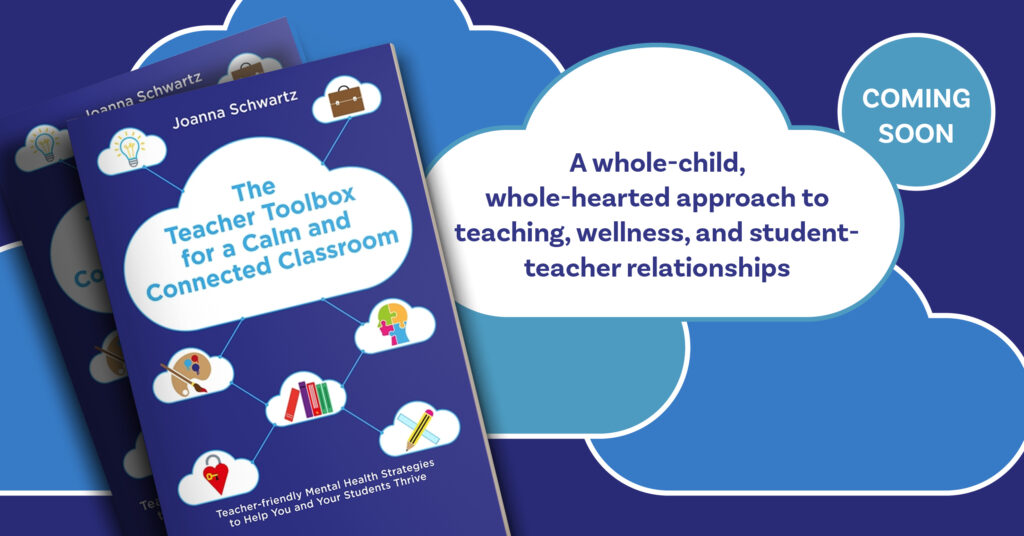You Can Be Human With Me: Where Did The Teacher Toolbox for a Calm and Connected Classroom Come From?

The Teacher Toolbox for a Calm and Connected Classroom releases August 19, 2021.
About 20 years ago, one of my teacher friends said something that sent me down a saner, more compassionate path of seeing myself and the world. We were brand new teachers at the time and were trying to figure out the work life balance and this crazy new world of education. One day after school, we were chatting as we packed up for the day and I started to share a personal problem. But, not sure if my new friend would judge me, I stopped short. Catching my hesitation, my friend looked at me and spoke in a voice that was equal parts kind and sincere. “Joanna, dear,” she said. “You can be human with me.”
This same permission to be human is the premise behind my book Teacher Toolbox for a Calm and Connected Classroom. Just as my dear friend assured me that I could show up with all my faults and still be accepted, this book affirms for teachers that it’s okay to lay claim to our collective humanity. We are not teacher-bots and our students are not student- bots; we have rich worlds and experiences outside of school that affect who we are and make us perfectly imperfect in any given moment. Even so, we all have the right to be treated with dignity and consideration. Unfortunately, many schools expect teachers and students to leave mental health needs at the door and be 2 dimensional teachers and 2 dimensional students – much like Flat Stanley!
“We are not teacher-bots and our students are not student- bots.”
When I started teaching 20 years ago, I couldn’t have guessed the extent to which this “human-ness” would play a role in my classroom interactions. There was so much I didn’t understand about teaching and so much about human interactions that hadn’t been taught in my teacher preparation programs. I remember spending breaks and my lunch period sitting in the rooms of the more experienced teachers trying to soak in everything they said and did. How did they get the kids to stop talking and pay attention? How did they get them in a quiet line? And how did they make them want to learn? I was trying to memorize the magic of the successful classrooms but I was missing a key piece of the puzzle.
Then, when I started to work as a therapist, I started glimpsing the shape of that missing piece. I saw that there are no simple answers to what makes classrooms the way they are because there are no simple answers to what makes people the way they are. In fact the more I learned about counseling and the more I worked with children and families, the more I became blown away by the depth and nuance of what happens within and between people. In this book, I wanted to share some of these core concepts of psychology and trauma-sensitive education in a concrete, practical way, not to overwhelm teachers, but rather to share what I learned and how psychology can change the way we teach. By doing so, I hope to honor, explain and acknowledge the complexity of our intensely social and emotional work. It is no simple task!
“…when we think about behavior, ours and our students, we can experience compassion and curiosity.”
When lessons fail and when we have a hard day, teachers often automatically go to the place of I’m a bad teacher, this is all my fault! or even This is a bad kid, it’s all his/her fault!
My hope is that the book helps provide teachers with a constellation of alternate explanations because there really are so many possible reasons why lessons fail and so many possible reasons why kids act the way they do. When we realize this we release ourselves – and our students – from stifling expectations. Then, when we think about behavior, ours and our students, we can experience compassion and curiosity about what happened, not blame and shame. It really is that shift from wondering ‘What is wrong with you / with us?” to “What happened to you / happened to us?” that makes all the difference and can make your classroom a more calm and connected place.
Connect with Joanna:
Instagram: @toolboxforteachers